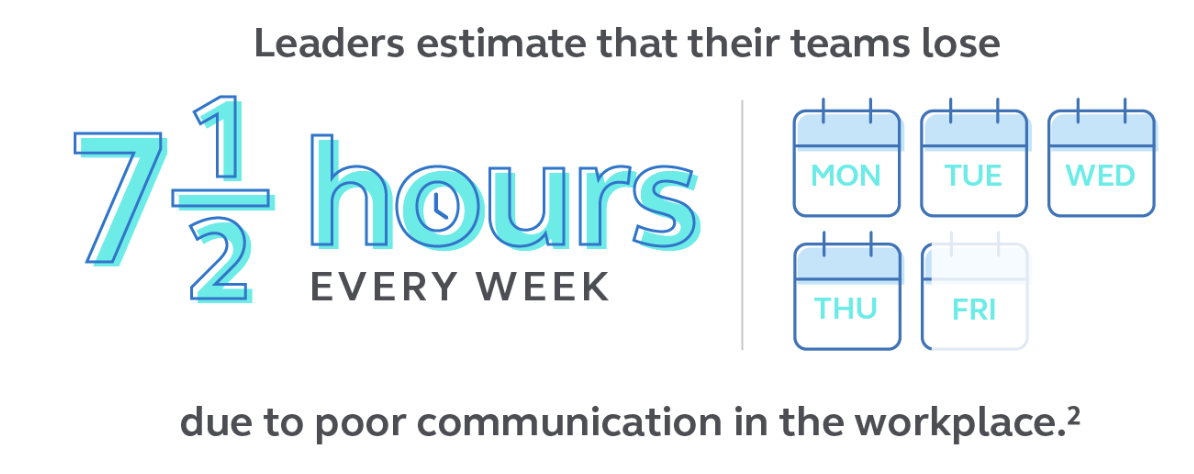10 Employee Communication Tips to Help You Stay in Touch With Your Team
Principal® Mental Health and Well-Being Series
Originally published on Principal.com
The Center for Creative Leadership once observed that, in a crisis, “People are overwhelmed with the amount of information coming at them. They’re on the lookout for essential information that can help”—yet often lack time to digest it. Arguably that’s now true on many “normal” days.
The business world is more hyperconnected than ever. Many post-pandemic offices have dispersed with the surge in remote and hybrid workers. These and other trends make effective employee communication even more important for growing businesses. The better your business can be with staff communication, the more your solid internal messaging may help employees stay consistent in how they talk about your business to customers. Improving employee communication can build trust to help employees feel satisfied and be more productive at work.
Good employee communication is a key challenge because perception gaps can persist in the best workplaces: Recent Principal research shows that 79% of employees want at least one additional benefit, but far fewer small and midsize businesses (66%) plan to add any.1 Employee benefits are one prominent way businesses can respond to staff wants and needs with tangible support.
If your business doesn’t include relevant communication expertise, you may want to hire a specialist consultant to help guide you on more detailed communication strategies. But we’ve compiled 10 ideas to get you started.
1. Leaders, talk regularly to your team.
The first rule is simple: Silence isn’t an option. Hold monthly conference calls or online town halls where you (and your management team) can address employee questions and concerns, including those submitted anonymously in advance. A steady stream of reassuring emails, prerecorded videos (nothing elaborate—use your phone or laptop), and other messages can help bridge the distance.
2. Be transparent and clear to communicate effectively.
The unknown can be frustrating and unproductive for employees. A recent survey by Grammarly and the Harris Poll, “The State of Business Communication,” found that most employees (59%) and an even greater share of business leaders (82%) are concerned about maintaining effective communication with the rise of remote and hybrid working. Leaders surveyed estimate that their teams lose seven and a half hours every week due to poor communication in the workplace.2 Even small, practical considerations such as vacation planning can be made more transparent and clearer in employee communications.
Teams also appreciate when management admits they don’t have all the answers in a crisis or are unsure about the future. You don’t need to be omniscient—just show you care and are paying attention.
3. Help employees offer honest (and anonymous) feedback.
Even the most talkative and attentive business owner can’t spot every important workplace issue without anonymous employee feedback. You can keep it as simple as an online survey tool, such as these options for employers compiled by the U.S. Chamber of Commerce. If you allow employees to post feedback on your own intranet or internal messaging service, monitor and maintain control over the forum to avoid distracting disputes or abusive behavior. It’s even better if employees can “like” others’ comments on a platform that encourages positivity and helps coworkers elevate each other’s concerns.
4. Get employee feedback—then respond.
Good feedback can improve your workplace and eliminate your blind spots as a leader. But it eventually will dry up if you don’t act on employees’ top concerns. If you can’t get to all the questions during a staff meeting, compile a list and systematically respond to them as soon as possible. If your business is larger, encourage employees to reach out to their direct supervisors, and empower those supervisors to quickly handle all reasonable concerns.
5. Delegate to managers and key employees to reinforce communication.
Speaking of good delegation: A business owner can’t deploy all the necessary employee communication even among a staff of dozens. Closely monitor feedback from your managers to help ensure they have the support, resources, and confidence to lead their teams through routine business, a shift to hybrid work, or even a crisis. Adjust as necessary. Managers may need more latitude to help keep the business both empathetic and agile—for instance, to offer support to a single parent struggling with childcare, or to extend flexibility to an employee struggling with anxiety and depression.
6. Provide a single source of truth.
Even if your company doesn’t operate its own intranet as a universal digital hub for staff communication, you can still offer a common forum. Think of something as simple as a low-tech cork bulletin board (if you’re in an office); a collaboration platform like Slack, Microsoft Teams, or Facebook Workplace; or a weekly email that employees can rely on for the latest updates and milestones.
7. Encourage employees to connect and communicate with each other.
A lot of informal self-care takes place among employees when they share how they’re problem-solving at work or feeling about their personal triumphs and challenges. When a crisis hits, this group care becomes even more important as teams handle the stress of coping with a quarantine, or balancing child or elder care while working from home. A casual coffee time or group game—virtual or in person—can provide a simple yet effective morale boost if you carve out time for employees to participate and encourage them to attend without it feeling forced. Whichever forum is right for your business, help employees to use it to stay in touch with each other.
8. Share other helpful resources for employees.
One of the keys to effective communication in the workplace is helping employees to help themselves. Share resources for how they can advocate for their own mental health and wellness, or tackle specific concerns such as balancing unique issues triggered by remote work. You can offer an employee assistance program (EAP) as part of your benefits package. Even if you already offer an EAP, remind employees regularly: Principal business research in February 2022 found that 27% of employees didn’t know whether their employer offered an EAP.3 You also can point employees to more informal help from external sources. For instance, the U.S. Chamber of Commerce has its own “Workplace wellness” hub. The nonprofit Mental Health America offers a hub with “Mental health resources for employees.”
9. Model inspired leadership and good citizenship for your employees.
In a volatile world with a tight labor market, every message to your team can be a chance to win or lose their loyalty. Your employees inevitably will compare you to all your peers and competitors. Keep in mind the difference between leadership (vision) and management (details and deadlines) and how to balance them in your employee communication. Also situate your business within your broader community—because your employees and their families are part of that community. For example, during the pandemic Principal® launched The Giving Chain as a community effort. Get out ahead of employee expectations to connect with fellow business owners and build more community spirit.
10. Above all, show genuine empathy for employees.
As already mentioned, an effective leader who communicates well in the workplace doesn’t need to always have all the answers. If you genuinely care for employees, respond to their concerns, and stay honest about the limits of what you know or can act on, that leadership attitude alone may help employee morale and well-being. Whether your employees are essential workers facing greater risks on the job, or they’re just struggling to adapt to hybrid or remote schedules, the small but meaningful kindness you show can make a difference in how they organize their lives so that they have time and attention to devote to their work.
What’s next?
- After improving communication with your employees, work with your financial professional to respond to their needs, or let us help you find a financial professional for your business
1 Principal research February 2-4, 2022, of 100 employees of other businesses (and not self-employed) and of 128 benefits decision makers from non-client employers (90% of them with fewer than 500 employees)
2 Grammerly and the Harris Poll, “The State of Business Communication,” January 2022.
3 Principal research February 2-4, 2022, of 100 employees of other businesses (and not self-employed).
Be sure to follow your company’s social media and vendor review policies. Vendors listed are not affiliated with any company of the Principal Financial Group®.
The subject matter in this communication is educational only and provided with the understanding that Principal® is not rendering legal, accounting, investment advice or tax advice. You should consult with appropriate counsel, financial professionals or other advisors on all matters pertaining to legal, tax, investment or accounting obligations and requirements.



